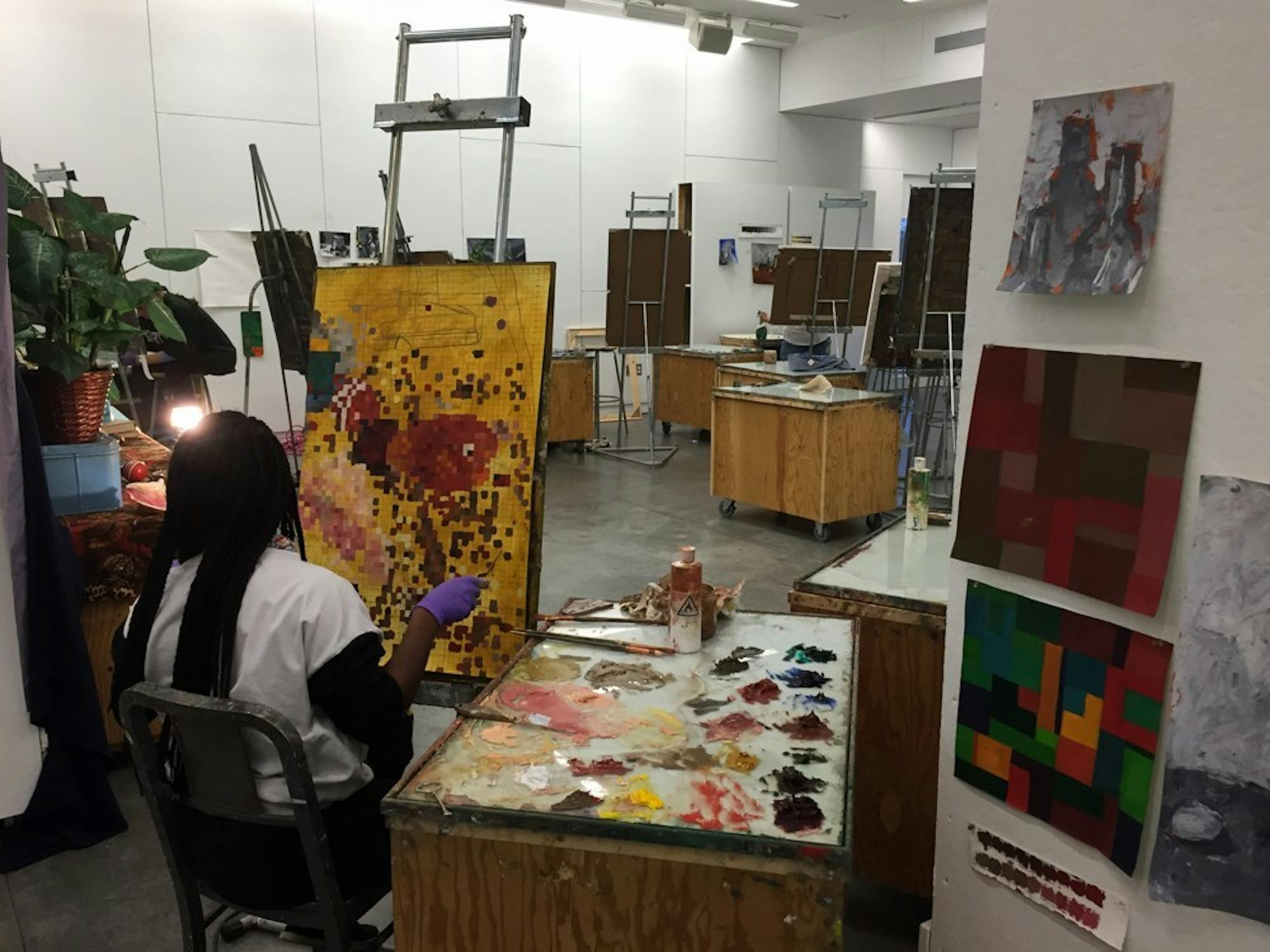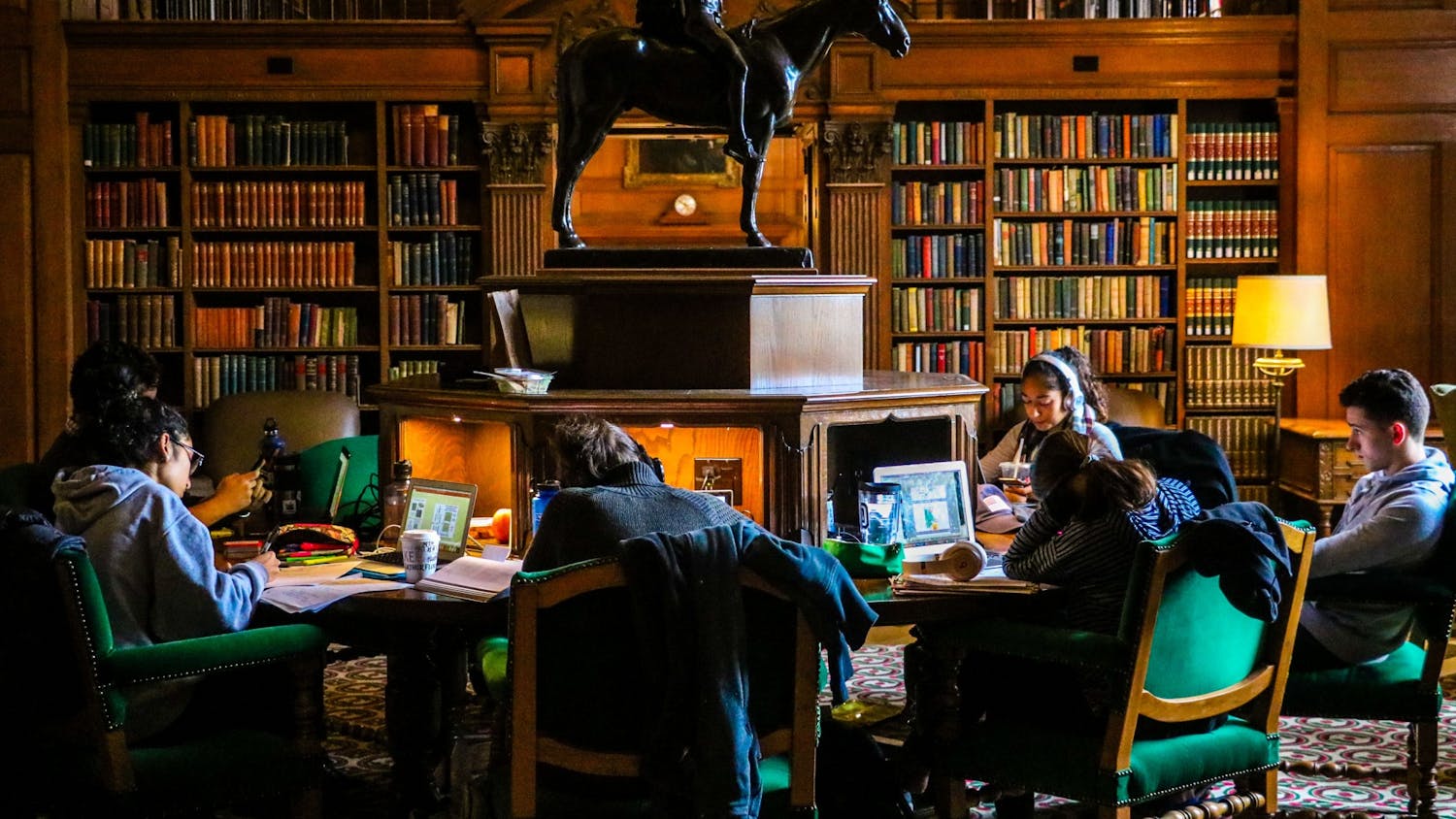With the College’s switch to online instruction this term, many questions have arisen over how studio art and music courses, which rely heavily on in-person instruction and hands-on learning, will proceed. Despite the challenges, however, faculty and staff in both departments have found ways to keep their courses running remotely.
Music professor Ashley Fure, who originally planned to teach MUS 25, “Introduction to Sonic Arts” and MUS 34, “Sound Art Practice” this term, said that she had specifically designed those two courses around “The Force of Things,” a sonic performance that she originally planned to launch at the Hopkins Center for the Arts in April, but which has since been postponed.
Instead of offering the courses as planned, Fure said she will teach them during the summer term and provide one-on-one instruction for seniors graduating in the spring.
“The students will be really a part of the team and sort of learn from the inside out what it’s like to pull off [a] gigantic immersive interdisciplinary performance like [The Force of Things,]” Fure said. “It’s too rare a chance to just let it go, so I moved [the courses] over for that.”
Many courses in both the studio art and music departments rely on campus facilities and equipment, such as art studios, musical instruments and exhibition spaces. According to music department chair Kui Dong, students who remain on campus and are currently taking MUS 53, “Keyboard Instruction,” can request access to Hopkins Center facilities through the music department on an individual basis. Meanwhile, students off campus need to use their own instruments to participate in practice-heavy courses, Dong said.
Studio art professor Colleen Randall, who is teaching SART 15, “Drawing I,” SART 25, “Painting II” and SART 72, “Painting III” this term, said that she will meet with her students during the course’s regularly scheduled period, as well as in individual meetings. Assignments will be made available for students on Canvas, where students can upload their work and discuss it with their peers, Randall said.
For Randall, the biggest adjustment is trying to determine the individual working situations of her students. For example, Randall said that students in Painting II and III might need to adjust the material they work with based on their circumstances.
“Usually we teach Painting II or III in oil paint, but oils need ventilation, and not many students will have access to a space with ventilation, so I'm recommending they work in acrylics or another water-based medium,” Randall said. “Students who don't have access to tables like those in the drawing studio will have to adjust the size of their work.”
Randall added that she and other studio art professors have made a list of recommended or required materials that students can purchase online and have shipped directly to their place of residence.
“We are trying to keep the cost of materials within what our student fees would normally be,” Randall said. “And we've asked anyone who has financial difficulties to contact us so we can help them afford the materials.”
According to studio art department administrator Kelly Thompson, students taking printmaking classes will use non-toxic paints and supplies, such as acrylic paint instead of oil, to avoid using harmful chemicals in their homes. Classes like SART 16, “Sculpture I” will be working with sculptures on much smaller scales than usual.
“I'm really excited to see what can be accomplished and what can't be done in an online format since it's new territory for many of us,” Randall said. “And it's been very exciting to work creatively to figure out a way to solve those problems.”
Despite the difficulties of altering courses so heavily dependent on hands-on teaching and learning, the studio art and music departments have chosen to move forward with most of their scheduled classes for the term. According to Thompson, the only course canceled in the studio art department is SART 23, “Figure Sculpture.”
In addition to the postponement of Fure’s courses, the music foreign study program was canceled alongside all other spring international study programs.
Charlton McArdle ’21, who is planning to take Painting II and SART 71, “Drawing III” this term, said that he expects remote teaching to pose certain challenges.
“Art is something that involves so much physical and visual learning, and a lot of that physical aspect will be lost,” McArdle said. “It is a lot easier [for professors] to give one-on-one advice when they can walk around and grab people.”
Despite these difficulties, McArdle said that he has been looking forward to taking online art classes this term, as he believes creating art allows him to maintain his mental well-being under the stress of the pandemic.
“[Taking art classes] is almost for my sanity ... since drawing and painting is a great way to not get bored,” McArdle said. “Obviously, there will be things that are lost, but for me doing arts is how I can make the most out of the situation.”
Thompson said that the studio art department will provide alternative learning opportunities to account for students no longer being able to visit the Hood Museum of Art or nearby art exhibitions on campus. According to Thompson, the department will host an online exhibition every Thursday on its Instagram account, where students will be able to show their work to their peers and see what others are creating.
Similarly, the music department is looking into the possibility of hosting live-stream recitals for classes that involve musical performances, according to Dong.
Studio arts and music faculty have also adapted their classes to align with the College’s credit/no credit grading system for the spring term. McArdle said that he believes the switch to credit/no credit grading may encourage students who normally do not take art classes to try something out of their comfort zones.
“It was quite daunting for some people who think they are not artistically gifted when there is an actual grading system,” McArdle said. “The credit/no credit system will allow people to take more risks or feel a little bit less pressured.”
Randall said that the credit/no credit system will not affect the academic performance she expects of students, but it will provide flexibility for students who lack access to the resources normally available on campus.
According to studio art department chair Enrico Riley, the department is currently working out the details for students completing a thesis. Each senior music thesis candidate has already been assigned to two faculty members who can advise their work remotely, according to Dong. If their theses involve a performative element, the department is looking for opportunities to arrange virtual performances, Dong said.
In transitioning its operations to an online format in such a short window of time, Thompson said that the studio art department has demonstrated both ingenuity and diligence.
“I feel that the faculty have to be commended for shifting their teaching approaches over the course of a couple of weeks,” Thompson said. “Everyone in the department has really pulled together to make sure everyone has the materials and tools they need to make this a successful term for the students.”



